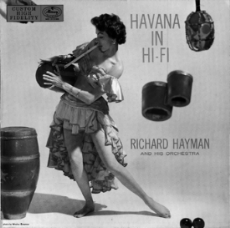Where Urban Whitewater and History Meet
The James River at Richmond
by Jon M. Graznak
Whitewater paddling usually conjures images of a pristine watercourse threading through wilderness canyons, solitude and undisturbed natural beauty. However, my new hometown of Richmond, VA has never done things the usual way. A combination of history, geology, luck and hard work has created a unique whitewater resource that offers boaters a solid Class IV run where the canyon walls are glass and steel skyscrapers.
More than a century before the American Revolution, Richmond’s founding families came up the James River and were stopped by a series of rapids, which not only posed a barrier to navigation, but also offered hydro power for mills and factories. While the James is a normally placid river with a average gradient of a foot a mile, an outcropping of granite extends from Appalachia and crosses the river bed creating the Falls of the James which drops 120 feet in less than seven miles. For 300 years, Richmond had turned its back to the river, using it for a combination of power plant, toilet and trashcan. Fortunately for boaters, this attitude began to change 20 years ago.
While good intentions and the stricter environmental laws of the 1970’s certainly helped the James, it was really the devastation of hurricanes Camille and Agnes that gave the river it’s biggest boost toward becoming a recreational resource. As century old dams failed, the James began to clean itself and the economic times did not warrant the rebuilding of many industrial structures. Hard legislative work to stop relicensing of some levees, and the foresighted purchase of much riverfront property by the Richmond Parks and Recreation Department have assured that this section of river will continue to improve.
I came to the James in a round-about way. Simply, I fell in love with a woman who shared my addiction to boating and moved to Richmond to be with her. Within the first week I was here we were on the river and I was learning the very mixed blessings of an urban whitewater river. Of course, the greatest of these is access. There are lots of wonderful places to get on the river. It is actually possible to run a 6 mile stretch of Class III and IV water and take a taxi cab or city bus as a shuttle.
The other great positives are diversity and the ability to match a trip to the moods and skills of the paddlers. A trip on the James through Richmond can be a leisurely float or a serious whitewater adventure depending on the section of the river and the flow levels. Because the James River basin is quite broad, a one foot rise in the river levels may double the average flow. High water flow rates can reach 40,000 cubic feet per second (c.f.s.). For comparison, the recent Grand Canyon flood releases which generated national news coverage were about 45,000 c.f.s.
Boating on the James takes a change of mind set for most paddlers. If you require a solitary wilderness experience to enjoy boating, you are not going to find it here. Many of the most challenging whitewater drops are created by man-made obstacles like old dams and underwater pipelines. Also, the citizens of Richmond have been throwing things in the river for centuries. While it is uncommon these days to find obvious trash, concrete rubble, re-bar and pieces of old construction often lurk and wait to create excitement for boaters.
Yet it is the juxtaposition of the very urban with the wild, or the historic with the modern that makes this area so appealing. It is not uncommon to see bald eagles and homeless people fishing within a river mile of each other. The Federal Reserve building towers 30 stories across the river from a Civil War prisoner of war camp. The national headquarters of Reynolds Metals sits within sight of a canal surveyed by George Washington when he was not yet thirty years old.
Some of this irony seems to be reflected by the boaters who inhabit the river as well. I work for an outfitter which is owned by a lawyer who last year closed his practice and moved to Santa Fe, New Mexico to work as a river guide. My fellow guides include a loving full time mother of two toddlers, who used to be an underwater welder, a department of revenue complaints department manager who often wants to heal us with crystals and aroma therapy, a travel agent who doesn’t really like people and a relapsed holy roller preacher who now finishes concrete for a living. We share the rapids with a national champion and U.S. Olympic Canoe and Kayak team member. We see him training hard for Atlanta as we bounce by with rafts full of church groups, corporate outings, college recreation programs, grandmothers from Ohio, almost none of whom have ever actually touched moving water before. It is only off the river that these incongruities seem strange. On the water, we are all boaters; the river is the great equalizer.
Urban whitewater boating is a paradox which not all paddlers appreciate. Some are simply unable to enjoy a trip which takes place so close to other people. Others however, realize that adventures can happen wherever one looks. The challenge of the rapids, the history of the city, the ease of access and the eccentricity of the companions will return them often to the Falls of the James.
For more information on the Falls of the James through Richmond contact:
Richmond Raft Company
4400 E. Main Street
Richmond, VA 23231
(804) 222-RAFT
Commercial raft trips and fishing guiding
City of Richmond Recreation and Parks James River Park
(804) 783-7300
Administers much of the access, good source for maps and information
Chesterfield County Parks and Recreation
(804) 748-1623
Kayak and canoe instruction, water safety information
Jon Graznak
jgraznak@i2020.net
River and fishing guide, naturalist, writer


